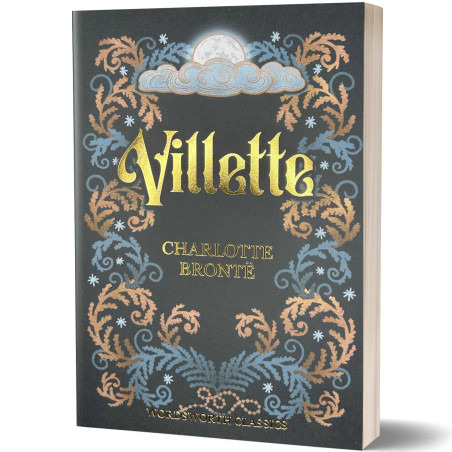With an Introduction and Notes by Dr Sally Minogue, Department of English, Canterbury Christ Church University College.
Based on Charlotte Brontë’s personal experience as a teacher in Brussels, Villette is a moving tale of repressed feelings and subjection to cruel circumstance and position, borne with heroic fortitude.
About the Book
Based on Charlotte Brontë’s personal experience as a teacher in Brussels, Villette is a moving tale of repressed feelings and subjection to cruel circumstance and position, borne with heroic fortitude.
Rising above the frustrations of confinement within a rigid social order, it is also the story of a woman’s right to love and be loved.
About the Author
Charlotte Brontë
Charlotte Brontë (1816-1855) was oldest of the three Brontë sisters to achieve fame. Her first published novel 'Jane Eyre' remains her most popular work, but her subsequent books, 'Shirley', 'Villette' and the posthumously-published 'The Professor' are all highly rated.
To find out more about Charlotte Brontë, read Sally Minogue’s article on her work and life here.
Charlotte Brontë, best known for her novel Jane Eyre, was born in Thornton, Yorkshire, in 1816, the daughter of an Anglican clergyman. After the death of her mother in 1821, Charlotte was left with her sisters Marie, Elizabeth, Anne and Emily and her brother Branwell in the care of their strictly religious Aunt Elizabeth. During a somewhat unhappy childhood, the children created imaginary worlds as an escape from their everyday life.
In August 1824, Charlotte, Emily, Maria and Elizabeth were sent to the Clergy Daughters’ School at Cowan Bridge in Lancashire. Charlotte maintained the school’s poor conditions permanently affected her health and physical development and hastened the deaths of Maria and Elizabeth. Charlotte was governess with the Sidgwick family at Skipton, and in 1841 with the White family at Rawdon; however, her attempts to earn a living as a governess were constantly hampered by her terrible shyness, her ignorance of children and her longing to be with her sisters. In 1842-3 she spent some time in Brussels, initially with her sister, Emily, and subsequently alone. Her experiences working as a teacher gave her material for the books she would write subsequently.
Charlotte’s first book, The Professor, failed to find a publisher, but the response had been sufficiently encouraging for her to submit her next manuscript, Jane Eyre, which was published in 1847 and achieved immediate success. Dedicated to W.M. Thackeray, it is the story of a penniless orphan who becomes a teacher, obtains a post as a governess, comes into an inheritance from an uncle and finally marries the Byronic hero. Jane Eyre, like all of her books, was first published under the pen name of Currer Bell, and it was sometime before her true identity, and indeed gender, was revealed.
She ceased writing for a time during which her sisters, Emily and Anne, and her brother Branwell died in an eight-month period from September 1848. This, with the earlier deaths of her other two sisters, meant she had lost all five siblings. She returned to writing to help cope with her grief, and Shirley, which deals with themes of industrial unrest and the role of women in society, was published in October 1849. Villette followed in 1853; The Professor was published posthumously in 1857.
Charlotte had long been the subject of the affections of her father’s curate, Arthur Bell Nicholls. Declining his first proposal of marriage, she relented and they married in June 1854, honeymooning in Ireland. She quickly fell pregnant but died with her unborn child on 31 March 1855. She had suffered greatly during the pregnancy, but there is some debate as to the cause of her death, which may have been typhus.
During her lifetime, once her identity became known, her books were criticised for being ‘coarse’, and not befitting of a female writer. Her reputation started to grow after the publication of Elizabeth Gaskell’s biography in 1857, and her works, Jane Eyre, in particular, are seen now as representing a significant development in the form of the English novel, influencing later writers such as George Eliot and D.H. Lawrence. Her books portray the inner struggles of women in a society that stifles them both intellectually and emotionally.
- Langue
- Anglaise
- Dimensions
- 127 mm x 198 mm
- Edition
- Wordsworth Editions
- Collection
- Wordsworth Classics
- Auteur
- Charlotte Bronte
- Poids
- 322 g
- Nombre de pages
- 472 pages
- Date de Parution
- 10/05/1993
- Série
- Classics



























